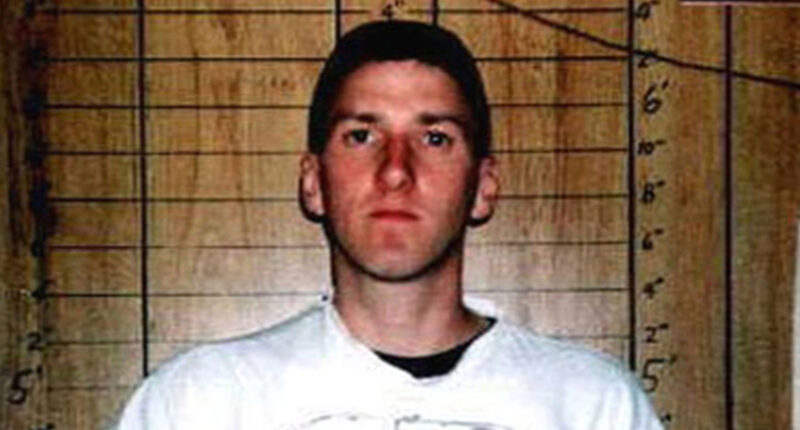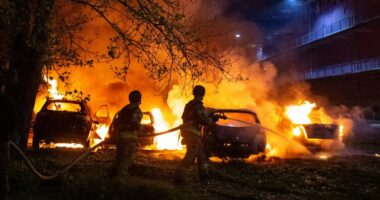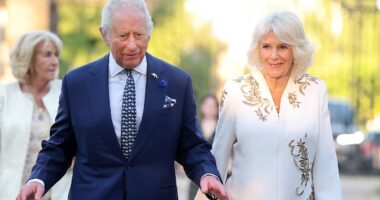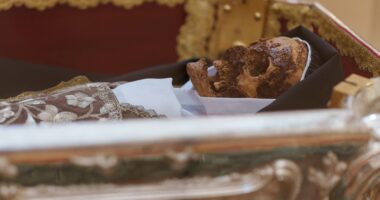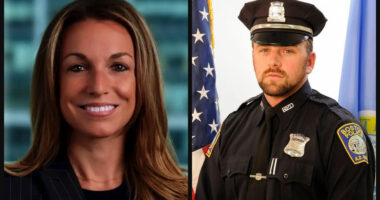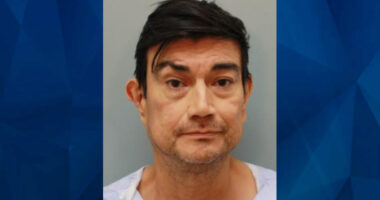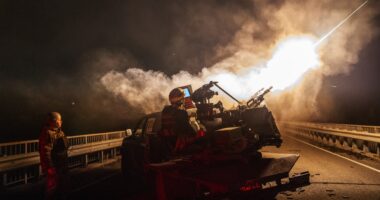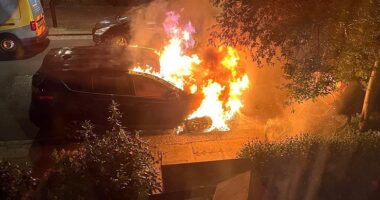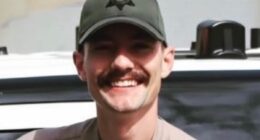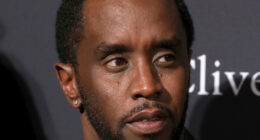A producer of a forthcoming film on the Oklahoma City bombing has shared that Timothy McVeigh, the perpetrator of the attack that claimed 168 lives, carried out the horrific act as a form of revenge for the Waco tragedy which occurred two years prior.
Timothy McVeigh, along with his accomplice Terry Nichols, orchestrated the bombing of the Alfred P. Murrah Federal Building, resulting in the tragic loss of many innocent lives. This devastating event took place on April 19, 1995, and left a permanent scar on the hearts of Americans.



WACO NIGHTMARE
The Netflix documentary, Oklahoma City Bombing: American Terror, delves into the details of this abominable attack, shedding light on the motivations and consequences of McVeigh’s appalling actions. The producer of the film, Greg Tillman, who also worked on the series Waco: American Apocalypse, provides insight into the dark motives behind one of the most heinous acts of terrorism on U.S. soil.
Radicalized loner McVeigh, who was waging a personal war against authority, had traveled to Texas in April 1993 while cult leader David Koresh was urging his followers to come out fighting against FBI and ATF agents.
Some cult members were killed in early battles with the ATF. That drew widespread condemnation which fueled the 51-day Waco siege.
The U.S. Sun previously sat down with former FBI agent Jim McGee, who admitted mistakes were made — errors that eventually changed how the FBI operates.
McGee said the agents got it wrong on the fateful day of February 28, 1993, which sparked a two-month nightmare.
It also contributed to the death of 86 people, including 28 children.
“I would not conduct the assault and search warrant execution the way ATF did,” said McGee, who worked the entire seven-week siege.
Watching from a police perimeter was McVeigh, who was drawn to Koresh’s warped vision and left incensed by how the FBI handled the situation.
Tillman has pored over the grisly details of both Waco and Oklahoma City.
He freely concedes that Waco wasn’t the FBI’s “finest hour,” describing it as more of a military-style operation than a law- enforcement response.
But as the world struggled to come to terms with what was, at the time, the worst terror attack on US soil, Tillman said authorities quickly stepped up and brought those responsible to justice.
“The way they reacted to the Oklahoma City bombing,” he told The U.S. Sun, ” gave them the opportunity to showcase what they were designed to do.”
He compared the FBI’s tactical approach to a “basketball team playing zone defense.”
The new documentary features riveting interviews with key officials involved in the eventual takedown of McVeigh and Nichols, both of whom were convicted for their roles in the bombing.


LUCKY BREAK
Nichols received 161 consecutive life sentences and will die in prison. McVeigh was executed by lethal injection in 2001.
FBI office chief Bob Ricks and his Kansas-based colleague Scott Crabtree detailed the painstaking statewide hunt to bring the twisted perpetrators to justice.
In a strange twist of fate, local police officer Charlie Hanger pulled over McVeigh for an unrelated firearms offense just 90 minutes after the bomb had wreaked carnage in downtown Oklahoma City.
Hanger stopped him for having no license plates on his car, and issued an arrest for carrying a loaded firearm.
McVeigh was taken to the small town of Perry — just nine miles from the blast site — and held in jail as the scale of the devastation began to unfold.
The local police had no idea the man they had just arrested was the most wanted man in America.
Initial fears were of a Middle Eastern terror attack.
Eventually, though, when McVeigh’s name was run through the system, they realized — just hours before he was due to be released—that McVeigh was already in custody.
McVeigh wanted the world to recognize him. He wanted power, he wanted attention.
Netflix producer Greg Tillman on Oklahoma City bomber Timothy McVeigh’s motives
“It’s an amazing fact in the story,” said Tillman of McVeigh’s initial arrest, “but I think a lot of people, especially post-9/11, have forgotten about it.”
There was even a moment, he said, when McVeigh was driving with a trunk full of volatile explosives—blasting caps and other materials—and was rear-ended. It could have blown the car to smithereens on the spot.
Tillman deliberately avoided watching previous documentaries about the attack to keep his mind unbiased.
However, he did pore over 60 hours of previously unreleased interviews with McVeigh, recorded in prison by a seasoned reporter from the Buffalo News.
After the media frenzy died down, Lou Michel visited McVeigh’s family home and convinced his father, Bill, to talk his son into speaking with him.
The tapes, Tillman said, offered chilling insights into McVeigh’s warped mindset.
CHARACTER ANALYSIS
They revealed his stomach-churning lack of empathy for the victims—19 of whom were children at the daycare center inside the Murrah building.
“Tim was looking for attention,” continued Tillman. “You hear that all through the interview. Someone finally listening to him—that’s what he wanted.”
One question from Michel’s colleague Dan Herbeck came out of nowhere—and struck a serious chord.
McVeigh was asked how he would define love between two people.
“There’s just silence,” Tillman recalled. “You can feel him trying to figure out the right answer to make himself look good.”
The response, said the producer, revealed McVeigh’s deep isolation, absent of close or romantic relationships.
“He wanted the world to recognize him,” he added. “McVeigh wanted power, attention. You see the same thing with school shooters, how they want people to notice them. They’ll do something that forces the world to pay attention.”
Once McVeigh, Nichols, and co-conspirator-turned-informant Michael Fortier (along with Fortier’s wife) were identified, the FBI launched a sweeping investigation involving over 30,000 hours of interviews.
The breakthrough came via a calling card used by the perpetrators, which Tillman said became a vital “roadmap” to their actions in the months leading up to the attack.
“There was an orgy of evidence,” he admitted.
TROUBLING INFLUENCES
Nichols, now incarcerated in a high-security prison in Colorado, has never granted an interview and has remained uncooperative since his sentencing.
Still, Tillman described him as “a very broken person who had real problems with relationships.”
The documentary also explores how McVeigh and Nichols were heavily influenced by The Turner Diaries, a 1978 novel by William Luther Pierce — founder of the white nationalist group National Alliance — writing under the pseudonym Andrew Macdonald.
The New York Times has described the book as “explicitly racist and anti-Semitic.”
“McVeigh may never have done this if he hadn’t found someone who made him feel like he wasn’t alone,” Tillman said. “He was always looking for a team.”
“He didn’t have the internet back then. Today, he probably would’ve found a whole group of people to talk with in some dark chat room. But back then, someone like Nichols had to be broken, too.”
Carl Spengler, the first medic on the scene, told The U.S. Sun ahead of the documentary release that he had hoped for “closure” after carrying the pain of seeing the horrific aftermath of McVeigh’s deranged plot.
Tillman hopes others embroiled in the disaster will find solace in his work and that despite the carnage, perhaps the world can learn a lesson from the nightmare of the devastating Oklahoma City bombing.
“I think it’s a great reminder in a time of a very divisive country we’re looking at right now, a lot of hate is coming from both sides, people are hurling insults and demonizing each other and not listening to each other,” concluded the veteran film producer.
“I think this is what happens when you take that mindset to its extreme.
“When you start to believe the people you disagree with are so horrible they don’t deserve to live, it’s important to remind people—this is where that leads.”


